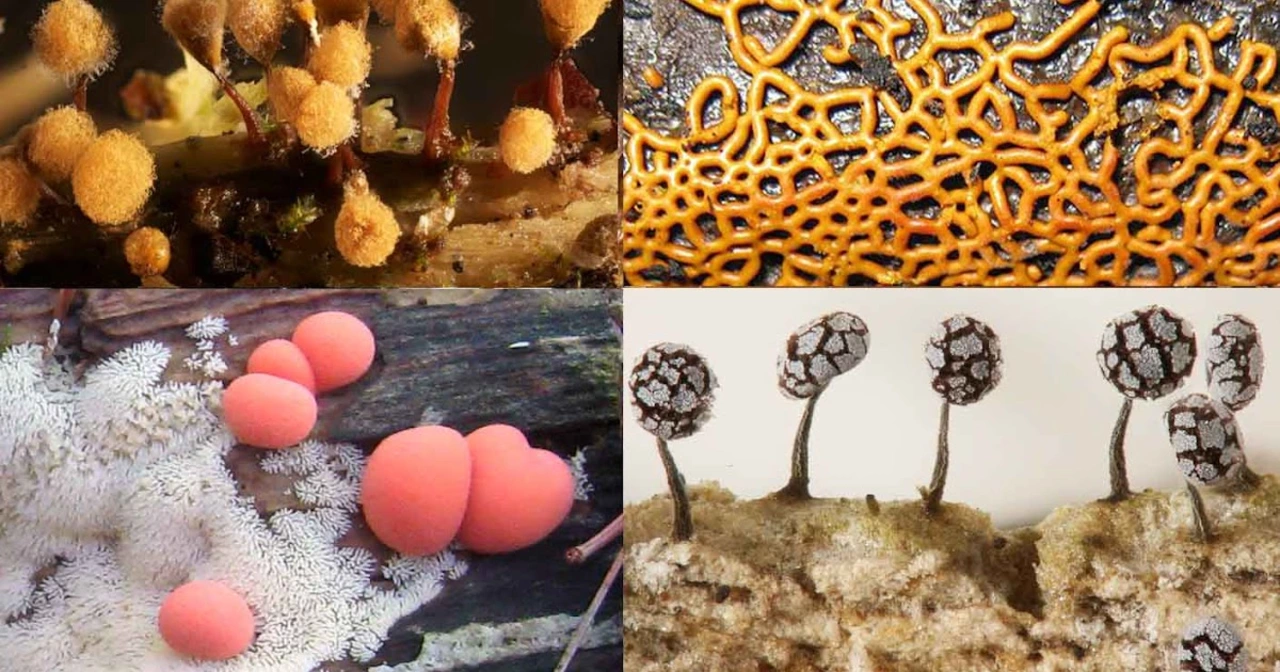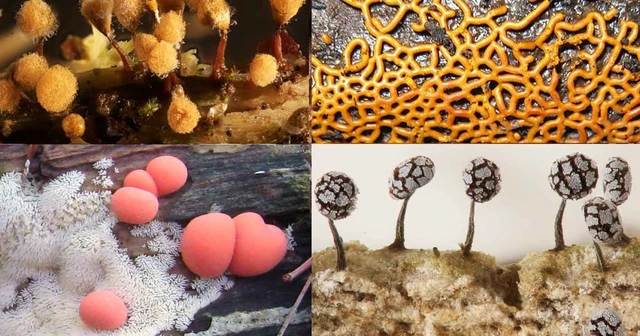Introduction to Mycology: The World of Fungi
As a blogger passionate about the natural world, I've always been fascinated by the lesser-known yet vital organisms that inhabit our planet. One such group of organisms is fungi. In this article, we will delve into the fascinating field of mycology, the study of fungi and their applications. Mycology is a branch of biology that focuses on the identification, classification, and understanding of fungi, which are an essential part of our ecosystems and play critical roles in various industries.
Unveiling the Mysteries of Fungal Biology
Fungi are a diverse group of organisms that belong to their own kingdom, separate from plants, animals, and bacteria. They come in various shapes and sizes, ranging from microscopic yeasts to massive networks of mycelium that can span several acres. A key characteristic of fungi is their unique cell walls, composed of chitin, a strong and flexible material also found in the exoskeletons of insects. This sets them apart from plants, whose cell walls are mainly composed of cellulose.
One of the most intriguing aspects of fungal biology is their mode of nutrition. Unlike plants, fungi cannot produce their own food through photosynthesis. Instead, they are heterotrophs, meaning they obtain their nutrients from external sources. Fungi release enzymes that break down organic matter, such as dead plants and animals, and then absorb the released nutrients. This process makes fungi essential decomposers in ecosystems, recycling nutrients and contributing to the maintenance of soil fertility.
Identifying and Classifying Fungi: A Mycologist's Toolbox
With over 100,000 known species and possibly millions more yet to be discovered, the world of fungi is incredibly diverse. Mycologists have developed various methods to identify and classify fungi, ranging from traditional techniques to cutting-edge molecular approaches. One of the most fundamental aspects of fungal identification is morphology, which involves examining the shape, size, color, and other features of the fungal fruiting body, or sporocarp. This can be done using simple tools such as a magnifying glass, or more advanced equipment like microscopes for studying microscopic fungi.
In addition to morphological characteristics, mycologists also study the reproductive structures of fungi, known as spores, to aid in identification and classification. Spores come in various shapes, sizes, and colors, and can be used to distinguish between different fungal species. Additionally, molecular techniques, such as DNA sequencing, have become increasingly important in mycology. By analyzing the genetic material of fungi, mycologists can gain valuable insights into their evolutionary relationships and uncover previously unknown species.
The Ecological Importance of Fungi: Symbiosis and Decomposition
Fungi play critical roles in maintaining the health and functioning of ecosystems. One of their most significant ecological contributions is their role in decomposition. As previously mentioned, fungi secrete enzymes that break down organic matter and recycle essential nutrients back into the soil. This process helps to prevent the buildup of dead plant material and supports the growth of new vegetation.
Another vital ecological role of fungi is their involvement in symbiotic relationships with other organisms. Mycorrhizal fungi, for example, form mutualistic associations with the roots of most plants. These fungi help plants absorb nutrients and water more efficiently, while the plants provide the fungi with carbohydrates produced through photosynthesis. This relationship is essential for the growth and survival of many plants, including the majority of crop species, highlighting the importance of mycological research for agriculture and food security.
Fungi in Medicine: From Antibiotics to New Therapies
Fungi have a long history of use in medicine, dating back to ancient civilizations that utilized them for their healing properties. One of the most famous examples of fungi in medicine is the discovery of penicillin, the world's first antibiotic, which is derived from the mold Penicillium. This groundbreaking discovery revolutionized medicine and has saved countless lives by providing an effective treatment for bacterial infections.
Since then, research into the medical applications of fungi has expanded, leading to the development of other important drugs such as cyclosporine, an immunosuppressant used in organ transplantation, and statins, cholesterol-lowering medications derived from certain Aspergillus species. Additionally, scientists are exploring the potential of fungi in developing new therapies for various diseases, including cancer, Alzheimer's, and multiple sclerosis. This highlights the immense potential of mycology in advancing medical science and improving human health.
Fungi in Industry: Fermentation, Bioremediation, and More
Aside from their ecological and medical importance, fungi also play a significant role in various industries. One of the most well-known industrial applications of fungi is in fermentation, a process used to produce alcoholic beverages, bread, and other food products. Yeasts, a type of single-celled fungi, are crucial for fermentation, as they convert sugars into ethanol and carbon dioxide, giving rise to the desired products.
Another promising application of fungi is in the field of bioremediation, which involves using living organisms to clean up environmental contaminants. Certain fungi have demonstrated the ability to break down pollutants such as heavy metals and pesticides, making them valuable tools for addressing environmental challenges. Additionally, research is underway to explore the potential of fungi in producing sustainable alternatives to plastics and other materials, further demonstrating the vast potential of mycology in shaping a more sustainable future.
Conclusion: Mycology and the Future of Fungal Research
In conclusion, the field of mycology is a fascinating and essential area of biological research, shedding light on the incredible diversity and importance of fungi. From their critical roles in ecosystems to their countless applications in medicine and industry, fungi hold immense potential for addressing global challenges and improving our understanding of the natural world. As a blogger and a passionate advocate for mycology, I believe that promoting awareness and appreciation of fungi is vital for inspiring future generations of scientists and fostering a deeper connection to the often-overlooked wonders of our planet.





Great overview, keep digging deeper!
I really enjoyed how you broke down the complex topics into digestible parts. The way you described mycelial networks felt almost poetic. It’s exciting to see more people appreciating the hidden heroes of ecosystems. Keep spreading the love for fungi.
Honestly, the article glosses over the fact that many so‑called "applications" of fungi are still speculative at best. You throw around buzzwords like "bioremediation" without mentioning the massive scalability hurdles. Also, the claim that fungi are the next big thing in medicine ignores the long regulatory battles they face. People need a reality check before getting starry‑eyed about mushroom miracles.
While the enthusiasm is commendable, one must consider the covert interests that steer mycological research toward profit rather than planetary health. Governments and corporations have historically weaponised biological agents; fungi could be the next frontier. Transparency is sorely lacking, and the public deserves to know who truly benefits from these so‑called breakthroughs. 🤨
Your critique, though forceful, overlooks several peer‑reviewed studies that demonstrate scalable fungal bioremediation. The enzymatic pathways have been characterized, and pilot projects in Europe show measurable pollutant reduction. Moreover, regulatory frameworks are evolving to accommodate fungal applications, mitigating the concerns you raised.
Wow, another meme‑level hype piece. You’re basically trying to sell fungi like it’s the new gold rush. Wake up, people, it’s just spores and slime.
Nice summary, very clear.
Oh great, another blog turning fungi into the superhero of sustainability. Because we totally needed another cape‑wearing mushroom.
This article completely ignores the moral implications of tampering with nature. We should be more careful and not just chase profits.
Love the passion you bring! 🌱 It’s awesome to see science presented with such optimism. Keep it up!
Fungi are cool. They do a lot of stuff.
The piece does a solid job tying ecology to everyday life. I especially liked the note on mycorrhizal partnerships. Looking forward to more balanced discussions.
From a biotech perspective, the enzymatic turnover rates of lignocellulolytic fungi present a paradigm shift in bio‑valorisation pipelines – think feedstock conversion efficiency skyrocketing 🚀
Honestly, this feels like a sales pitch dressed up as science. There’s so much hype and not enough hard data.
Sure, fungi are fascinating, but let’s not pretend they’ll solve every problem. If only they could also figure out why humans keep overcomplicating simple things.
The integration of fungal symbioses into agricultural models could enhance nutrient uptake efficiency, yet practical implementation remains limited.
Great job highlighting the potential of fungi! Your enthusiasm is contagious and will inspire many to explore this field.
One must ponder whether the sudden surge in fungal research is truly driven by scientific curiosity or by hidden agendas seeking to monopolise a new bio‑economy. The rhetoric sounds earnest, yet the funding trails hint at ulterior motives. Nevertheless, the discourse remains entertainingly paradoxical.
Thank you for raising such an important point about the broader implications of fungal research.
First, it is essential to recognize that the ecological roles of fungi extend far beyond mere decomposition.
Second, the symbiotic relationships they form with plants are a cornerstone of nutrient cycling.
Third, advances in genomic sequencing have unveiled a wealth of cryptic diversity that challenges traditional taxonomy.
Fourth, the potential for bioremediation hinges on specific enzymatic pathways that are still being mapped.
Fifth, industrial applications must grapple with scalability and regulatory compliance.
Sixth, public perception can be shaped by media sensationalism, which may obscure nuanced scientific realities.
Seventh, interdisciplinary collaboration between mycologists, chemists, and engineers is critical for translating lab findings into real‑world solutions.
Eighth, ethical considerations arise when manipulating fungal genomes for human benefit.
Ninth, education initiatives can demystify fungi for younger generations and foster stewardship.
Tenth, policy frameworks need to balance innovation with environmental safeguards.
Eleventh, funding agencies should prioritize long‑term ecological studies over short‑term profit‑driven projects.
Twelfth, the cultural history of fungi in medicine reminds us that breakthroughs often emerge from unexpected sources.
Thirteenth, citizen science platforms can accelerate data collection on fungal distribution.
Fourteenth, global collaboration can address disparities in research capacity across regions.
Fifteenth, ultimately, a holistic approach that integrates science, policy, and community engagement will unlock the true potential of fungi.
Interesting points, good read.